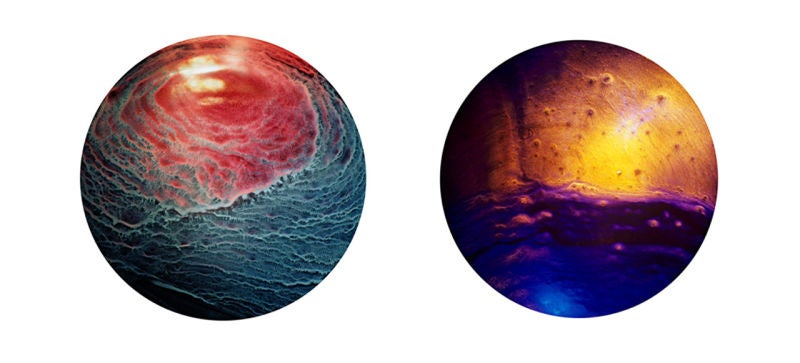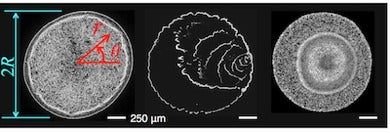
Two years ago, a Phoenix-based photographer teamed up with physicists at Princeton University to explore the unusually uniform rings a drop of whisky leaves behind when it dries. Now those same physicists have published their findings in Physical Review Letters.
Inspired by his wife’s love of whisky, photographer Ernie Button began photographing various samples—notably, the intricate complex patterns that would form in the bottom of the glass as the liquid evaporated. He used different colors of light to highlight those patterns. Over time, he noticed that only certain whiskies would leave behind those telltale rings (aged Scotch, American, or Irish whiskies). So he contacted Princeton physicist Howard Stone, who agreed to investigate why this happened.
You may have noticed those uneven stains that develop on your coffee table when thoughtless guests forget to use coasters. It’s called the “coffee ring effect”: the pattern you get when a single liquid evaporates and leaves behind a ring

Whisky is a so-called “binary liquid,” meaning that it is about 60 percent water and 40 percent ethanol. Scientists already knew that mixing a solvent like water and alcohol could reduce the coffee ring effect, but usually this only works for really tiny drops.
Whisky is different. Button’s photographs showed
Stone and his colleagues ran several experiments, and found that there are two types of molecules at work here. One type acts as a surfactant, while another polymer type serves to keep particles stuck to the surface, rather than being carried along with the flow. As Michael Schirber writes at Physics Focus:
As a drop evaporates, the surfactants collect on the edge, creating a tension gradient that pulls liquid inward (the so-called Marangoni effect). In addition, plant-derived polymers stick to the glass, helping to channel particles to the substrate where they adhere. To confirm this picture, the researchers showed that whisky-like liquids lacking either polymers or surfactants did not produce uniform stains.
The Marangoni effect is also behind the phenomenon of “tears of wine”—that ring of clear liquid that forms near the top of your glass, just above the surface of the wine.
Stone’s group gave a presentation at a 2014 physics conference reporting on their initial results, “but it took some time to complete the detailed measurements, write the work up for publication, and see [it] through the review process,” he told Gizmodo. Stone admitted that they were not able to identify the precise ingredients in whisky that are associated with these surfactant and polymer effects—the chemistry of whisky is pretty complicated— but they do have a few possible suspects.

There are some practical applications for this work, namely improving the uniformity of coatings in various industrial applications—like 3D printers, which use a technique called liquid deposition to buildup layers upon layers during printing.
“Our work suggests minimal ingredients to obtain nearly uniform coatings of particles,” said Stone—that is, you want to use as few ingredients as possible in your mixtures for coatings.
Mostly, though, it’s a charming example of how science and art can work together in symbiosis, each side gaining something from the interaction. For Stone and his colleagues, it was an intriguing science question that led to the recently published paper. Button learned a bit of useful science and produced some genuinely striking photographs. You can check out the entire whisky-inspired series here.